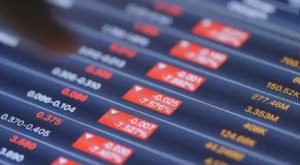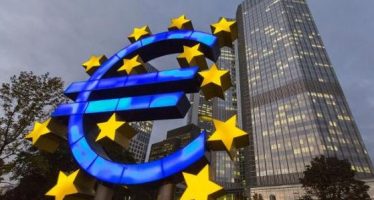Recession or Depression: Nadir Has Passed, Recovery Delayed
 The shape of things to come seems not to resemble the ‘V’ promised early on in the Corona Recession. With a little luck, growth graphs may yet turn into a hesitant ‘U’ shape. Die-hard optimists took heart from the latest batch of preliminary PMI (purchasing manager index) data which, even so, remain well below 50 across the board. That level indicates ‘no change’ whilst any lower number signals a gloomy outlook.
The shape of things to come seems not to resemble the ‘V’ promised early on in the Corona Recession. With a little luck, growth graphs may yet turn into a hesitant ‘U’ shape. Die-hard optimists took heart from the latest batch of preliminary PMI (purchasing manager index) data which, even so, remain well below 50 across the board. That level indicates ‘no change’ whilst any lower number signals a gloomy outlook.
In May, the UK Composite PMI crawled to 28.9 from its April low of 13.8 as businesses emerged from the lockdown and took stock of the environment. Financial support offered by the state in the form of credits, grants, and tax deferrals also permeated the battered economy, bringing a measure of relief to entrepreneurs.
The Eurozone Composite PMI also rebounded from 13.6 to 30.5 as restrictions on movement and operations eased. As far as sentiment is concerned, the nadir has been passed. However, analysts caution that it is probably too soon to celebrate. After hitting rock bottom in April, the only way was up, although that direction is likely to hit a ceiling before long. “May was very slightly less bad, but still awful,” says Chief Economist Alpesh Paleja of the Confederation of British Industry.
UK manufacturers seem the least pessimistic of the lot (40.6) whilst the services industry remains locked in gloom (27.8).
PMI indices gauge the level of confidence in the immediate future. A short V-shaped recession should produce a sharp increase to above 50 as economic actors note a pick-up in business. Due to the way PMIs are compiled, designed, and used, depressed returns indicate a continued lack of activity and the expectation that more of the same is up ahead.
In about a month from now, second quarter results will start dripping in. The first full corona quarter is expected to show a nearly unprecedented contraction of economic activity with GDP growth rates nosediving deep into negative territory and businesses reporting dismal results. Eurozone GDP is widely expected to have shrunk by 10 percent over the second quarter. The anticipated second wave of corona infections also dampens spirits as any sign of recovery may prove to be a false prophet of hope.
In Germany, the Manufacturers PMI only staged a barely detectable rebound, moving from 34.5 in April to 36.8 in May. French manufacturers were somewhat more optimistic though by no means ebullient. Elsewhere in the Eurozone, the indices document a profound absence of confidence in the future, emphasising the need for concerted and decisive action by the European Union to lift spirits and get economies moving.
Purchasing manager indices have become the standard gauge for measuring consumer and business confidence. As such, they are considered crucial to determining the overall direction of markets. As long as economic actors continue to spend, business will thrive, and jobs are created. That helps explain why governments and central banks release trillions: money in whatever form is the lubricant that keeps the economy running smoothly. The trick is to convince recipients that they should ‘pay it forward’ and not save for a rainy day in the middle of a downpour.
Previous quantitative easing (QE) initiatives, though much smaller in scope than the present ones, have produced mixed results. For years on end, the European Central Bank (ECB) released vast amounts of cheap and easy credit in an attempt to avoid deflation and spur business activity. However, the recovery that followed the banking crisis of 2009-10 was at best lacklustre. Growth did return but modestly and supported only by massive QE, leading market watchers to believe that the upturn was largely superficial in nature.
Notwithstanding its largesse in disbursing cash, the ECB consistently failed to attain its targeted 2 percent inflation rate, raising further suspicions that the overall market was unable to sustain growth without the benefit of stimuli.
Just before the viral outbreak paralysed business, the ECB had resumed its QE programme in order to encourage growth and ward off deflation. Thus, when the pandemic hit, Eurozone economies were not in the most buoyant of moods to begin with. A ‘V’-shaped recession – steep at both ends of the GDP curve – may never have been in the cards.
In the US, the Bureau of Labor Statistics (LBS) this morning announced that another 2.4 million workers have joined the dole queue pushing the total number of jobs lost since mid-March to 38 million. The only silver lining to be found concerns the slightly lower rate at which jobs are being destroyed. Last week, the LBS reported that 2.6 million US workers had been laid off. A fifth of the US labour force has now been idled as a direct result of the pandemic. Continuing claims for unemployment support increased to 25 million, resulting in a (insured) jobless rate of 17.2 percent.
However, the US Federal Reserve expects economic activity to pick up in the third quarter and grow strongly thereafter. The central bank did warn that a full recovery is not likely to occur before the end of the year. Although its balance sheet swelled to around $7 trillion, Fed Chairman Jerome H Powell promised to keep up the bank’s asset buying programme and told lawmakers earlier this week that he sees no upper limit to the Fed’s ability to support sagging markets. Over the past two months, the US Federal Reserve injected some $2.9 trillion into the country’s economy.
As signs of an early recovery fail to materialise, the prospect of a Great Depression 2.0 looms larger by the week. Just as the protracted slump of the 1930s defined an era and marked a generation, the present Corona Recession may leave an indelible imprint on societies. Countries such as Spain and Italy will find it difficult, if not impossible, to stage a quick comeback even if the European Union comes to their rescue as is now increasingly likely to happen.
During the Greek banking crisis, Eurozone ministers nervously watched developments in Spain and Italy – countries considered too large to rescue, although not too large to fail. Representing just 2 percent of the EU’s GDP, the financial needs of Greece were manageable. However, a wholesale rescue of Spain and Italy with a combined GDP of well over €3 trillion – compared to Greece’s €200 billion – is deemed well-neigh impossible.
The €500 billion support package being worked out in Brussels will undoubtedly ease the pain but may not be enough to return both countries to sustainable growth. In addition to ready cash, Spain and Italy need to tackle inefficiencies and introduce wide-ranging reforms similar to those that pushed Greece back from the brink of national insolvency.
Earlier this week, the Spanish government decided to take the opposite tack by turning back the clock on the labour reforms of 2012 which were credited with pushing down unemployment numbers. The decision imposes additional burdens on already stressed employers. Lacking meaningful government support, Spanish small- and medium-sized businesses are already falling like flies. Any future EU-backed support package may arrive too late for many.
You may have an interest in also reading…
The Sudden Fall and Coming Resuscitation of Reaganomics
Trickle-down economics was counted amongst the first fatalities of the corona pandemic. The belief that government interference with the functioning
The Reassertion of National Self-Interest
The Great Society is making a comeback with Big Brother possibly in attendance. After a decades-long retreat from public life,
Vietnam – No Stopping Country on the Ascendancy
After two decades of recording full employment and boisterous growth rates, Vietnam has taken a significant, though far from fatal,



















































































